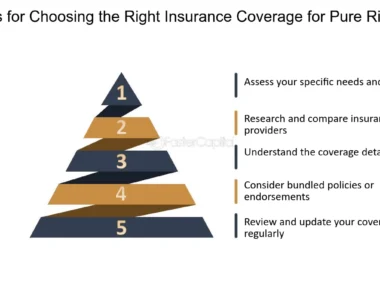Table of Contents Show
- Understanding the IRS Tax Debt Relief Program
- Types of IRS Tax Debt Relief Programs
- How to Apply for IRS Tax Debt Relief
- The Process of IRS Tax Debt Relief
- Benefits of IRS Tax Debt Relief Program
- Potential Challenges and Considerations
- Tips for Success in Obtaining IRS Tax Debt Relief
- Case Studies: Success Stories
- Conclusion
- FAQs

If you’re facing tax debt owed to the IRS, you’re not alone. Many individuals and businesses find themselves in this challenging situation at some point. However, there’s hope in the form of the IRS Tax Debt Relief Program, which offers various avenues to alleviate your tax burden and regain financial stability.
Understanding the IRS Tax Debt Relief Program
What is the IRS Tax Debt Relief Program?
The IRS Tax Debt Relief Program is a series of initiatives aimed at assisting taxpayers who are unable to pay their tax liabilities in full. It provides options for reducing or settling tax debts, often with favorable terms.
Who qualifies for the program?
Qualification for the IRS Tax Debt Relief Program depends on various factors, including your financial situation, the amount you owe, and your compliance history. Generally, individuals experiencing financial hardship or significant changes in income may be eligible.
Types of IRS Tax Debt Relief Programs
There are several options available under the IRS Tax Debt Relief Program, each tailored to different circumstances:
Offer in Compromise
This program allows taxpayers to settle their tax debt for less than the full amount owed if they meet specific criteria, such as demonstrating an inability to pay the full amount or proving doubt as to liability.
Installment Agreement
An installment agreement allows taxpayers to pay their tax debt over time through monthly payments. This option provides flexibility and can help individuals manage their financial obligations more effectively.
Currently Not Collectible Status
If you’re experiencing financial hardship and cannot afford to pay your tax debt, you may qualify for Currently Not Collectible (CNC) status. This temporarily suspends IRS collection activities until your financial situation improves.
Innocent Spouse Relief
In cases where one spouse is solely responsible for a tax debt due to errors or misdeeds committed by the other spouse, innocent spouse relief provides relief from joint liability.
Penalty Abatement
The IRS may consider abating penalties associated with tax debt under certain circumstances, such as reasonable cause or first-time penalty abatement.
How to Apply for IRS Tax Debt Relief
Applying for IRS Tax Debt Relief requires careful preparation and adherence to specific procedures:
Gathering necessary documents
Before applying for tax debt relief, gather relevant financial documents, including tax returns, income statements, and asset information.
Filling out the appropriate forms
Depending on the relief program you’re applying for, you’ll need to complete the corresponding IRS forms accurately and thoroughly.
Submitting the application
Once you’ve completed the necessary forms, submit your application to the IRS along with any required documentation.
The Process of IRS Tax Debt Relief
The IRS Tax Debt Relief process typically involves the following stages:
Initial review
Upon receiving your application, the IRS will review your financial information and assess your eligibility for relief.
Negotiation phase
If you qualify for relief, the IRS will work with you to determine the most suitable option and negotiate the terms of your agreement.
Final resolution
Once an agreement is reached, you’ll need to fulfill the terms outlined in your relief program, whether it’s making payments or providing additional documentation.
Benefits of IRS Tax Debt Relief Program
Participating in the IRS Tax Debt Relief Program offers several advantages:
Reduced debt amount
Many taxpayers can settle their tax debt for less than the full amount owed, providing significant savings.
Avoidance of penalties and interest
Certain relief programs may waive penalties and reduce or eliminate interest charges, resulting in further savings.
Financial stability
By resolving tax debt issues, individuals and businesses can regain financial stability and focus on future growth and success.
Potential Challenges and Considerations
While the IRS Tax Debt Relief Program offers relief options, there are potential challenges to consider:
Eligibility criteria
Not all taxpayers qualify for relief, and eligibility requirements can be strict.
Documentation requirements
Applying for relief requires thorough documentation of your financial situation, which can be time-consuming and complex.
Lengthy process
The process of obtaining IRS tax debt relief can be lengthy, requiring patience and persistence.
Tips for Success in Obtaining IRS Tax Debt Relief
To increase your chances of success in obtaining IRS tax debt relief, consider the following tips:
Seeking professional help
Consulting with a tax professional or attorney who specializes in tax debt relief can provide valuable guidance and support throughout the process.
Being truthful and accurate
Provide truthful and accurate information to the IRS to avoid complications or potential penalties.
Patience and persistence
The process of obtaining tax debt relief can take time, so remain patient and persistent in pursuing your case.
Case Studies: Success Stories
Here are a few examples of individuals and businesses successfully obtaining IRS tax debt relief:
- John, a small business owner, was able to settle his tax debt through an Offer in Compromise, allowing him to avoid bankruptcy and keep his business running.
- Sarah, a single mother facing financial hardship, qualified for Currently Not Collectible status, providing her with much-needed relief from IRS collection efforts.
- Michael and Emily, a married couple, successfully applied for Innocent Spouse Relief after divorcing and discovering discrepancies in their joint tax returns.
Conclusion
Navigating tax debt can be overwhelming, but the IRS Tax Debt Relief Program offers hope and options for individuals and businesses struggling with tax liabilities. By understanding the available relief programs, gathering necessary documentation, and following the application process diligently, taxpayers can take steps towards resolving their tax debt and achieving financial stability.
FAQs
What is IRS tax debt relief?
IRS tax debt relief refers to various programs and initiatives offered by the Internal Revenue Service to assist taxpayers in resolving their tax liabilities through reduced payments, penalty abatement, or other means.





